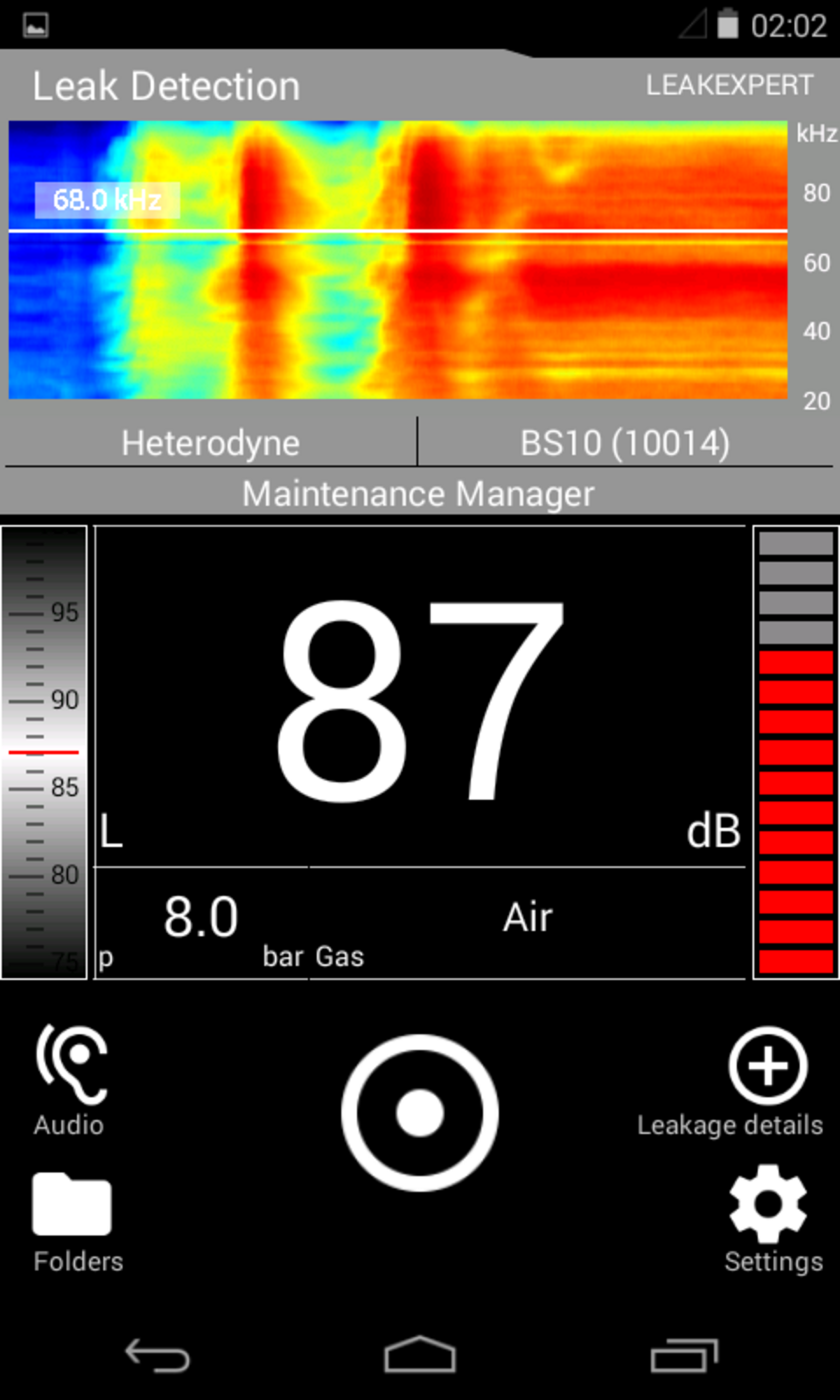APPLICATIONS
Electrical Inspection
Detect Partial Discharges and Increase Operational Reliability with Ultrasonic Testing Devices
Regular ultrasonic inspections of electrical assets will help to detect partial discharges at the earliest stage and to ensure plant reliability and safety. Our ultrasonic testing device SONAPHONE and the acoustic camera SONASCREEN can be used to detect and distinguish stages of corona, tracking and arcing, for high, medium and low voltage applications, to inspect open or closed electrical systems, to inspect switching cabinets, control boxes, relays, transformers, insulators, etc.
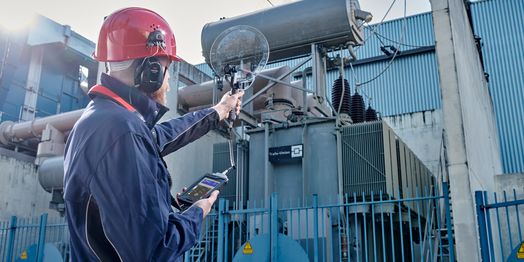
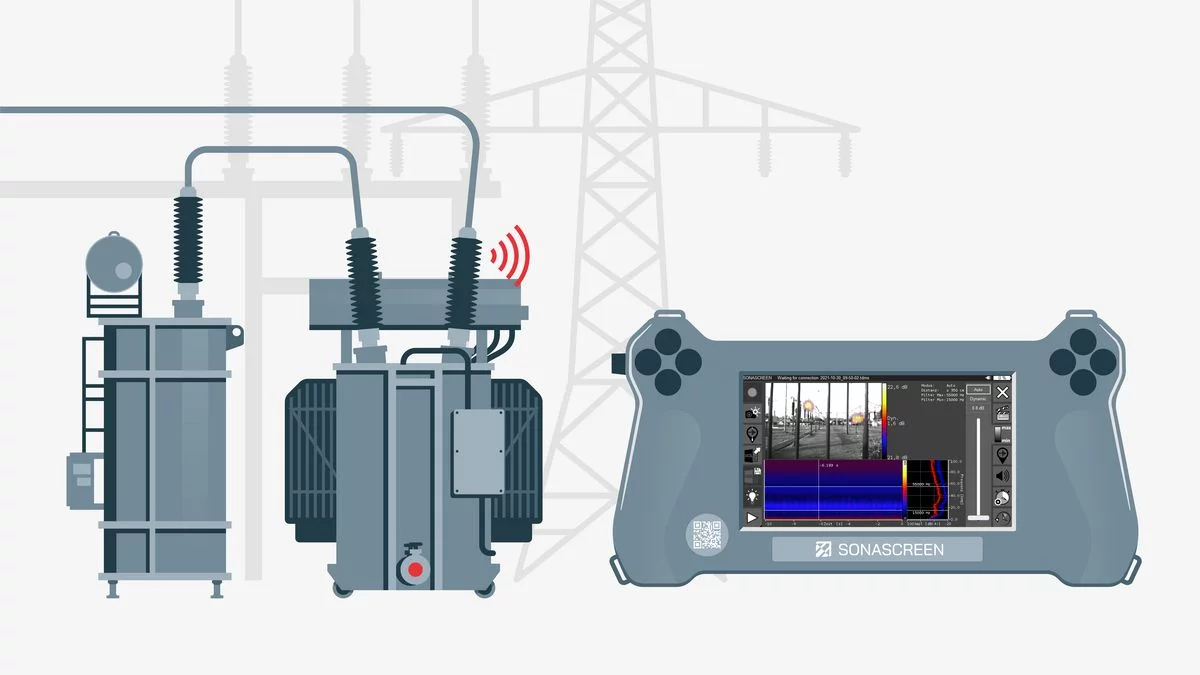
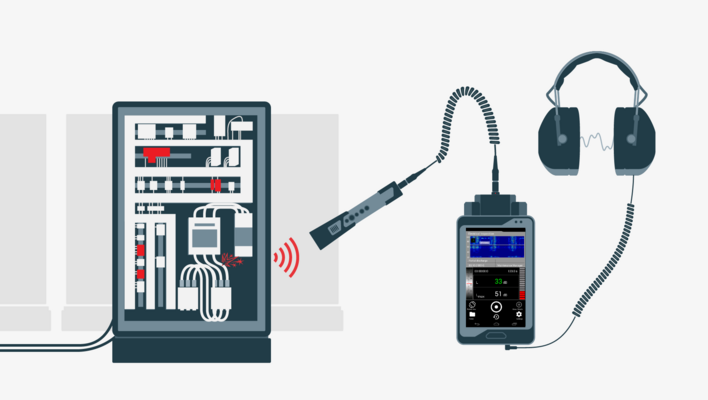
Advantages at a Glance
- Reduce costs of repairs
- Reliable energy supply
- Long-term operational sustainability
- Operating safety
Products
- SONAPHONE
- SONASCREEN
- SONAPHONE POCKET
Partial electrical discharges at insulations or connection points are caused by inhomogeneities, contamination and faults. They can be used for early detection of faults in electrical systems. If repairs are not implemented, partial discharges lead to breakdowns and thus irreversible damage to insulations and electrical equipment. Partial discharges can already occur from 400V and thus affect almost any equipment or system in the low, medium and high voltage range.
Used in combination with ultrasonic testing device SONAPHONE, the parabolic dish SONOSPOT detects damages that are difficult to reach or further away e.g on transmission and distribution lines. The high sensitivity and the precise directionality of the sensor allows detection of electrical partial discharges and damage at electrical insulations on e.g. medium-voltage equipment or switchgears. PD activity increases over time and can lead to progressive and irreversible damage in insulation systems.
The SONAPHONE range of devices are used in a large variety of industries. The extensive software and accessories available enable these devices to be used for a multitude of applications. Ultrasound data, including levels, spectra, and audio can be recorded during individual or series of tests. All data can then be transferred from the device to a computer and presented through the SONAPHONE DataSuite software, for further trending and analysis.
Another method to inspect electrical assets is to use our acoustic camera SONASCREEN. The acoustical visualization of ultrasound allows defective components to be identified with pinpoint accuracy and without interrupting plant operation. Your maintenance staff can easily detect high-frequency sounds from partial discharge, such as corona, tracking or arcing. Furthermore, typical forms of partial discharge can be recognized in the spectrogram. Regular ultrasonic inspections of electrical assets will help to detect partial discharges at the earliest stage and to ensure plant reliability and safety.

SONAPHONE
Digital Ultrasonic Testing Device for Maintenance 4.0

SONOSPOT
Broadband parabolic sensor BS30 for electrial inspections

SONASCREEN
Acoustic camera for detection of audible sound and ultrasound
Signal processing in the SONAPHONE outputs different sound levels, which are significant depending on the application.
As a basis, raw level values are obtained from the filtered raw data with a sample rate of 1 ms. The derived level values are calculated and stored in much larger time intervals. The sample rate can be varied in the menu “Measurement settings” between 4 ms and 128 ms. It should be noted that the set sample rate has an influence on the representation of data in the spectrogram.
Level values are:
- L(t) – Instantaneous Level
The instantaneous level is derived directly from the raw level values and averaged according to the sample rate setting (between 4 ms and 128 ms). For better readability on the display of the SONAPHONE, the largest value out of 8 consecutive values is represented.
- LF(t) – Instantaneous Level with Time Weighting
The standardized Instantaneous Level with Time Weighting (also Fast Level) is exponentially averaged with a time constant of 125 ms. The Fast Level follows the physical measurement effect relatively slowly. In history, it has been used on pointer instruments and fast changing measurements to increase the readability of the values.
- Lmin – / Lmax – Minimum / Maximum Value of Instantaneous Level
This level is the minimum or maximum value of the Instantaneous Level L(t) (sample rate between 4 ms and 128 ms).
- Lpk – Peak Level
The Peak Level is based on the highest measured value in the raw data (sample frequency 256 kHz / sampling time 4µs). It should not be mistaken for the more averaged Maximum Value of Instantaneous Level (Lmax) – the Peak Level can be a few decibels above Lmax.
- Leq – Equivalent Continuous Sound Level
The Equivalent Continuous Sound Level is a standardized averaging level and is used to describe time-varying level values. It averages the sound energy over the measurement period according to specific rules.
It should be noted that due to averaging important information regarding frequency distribution or changing values over time are lost. Therefore, the Equivalent Continuous Sound Level is particularly meaningful when acoustic situations with similar characteristics are compared.
The level values Lmin, Lmax, Lpk, Leq are calculated from the data from the beginning of each measurement and shown on the display. Pressing the “Reset” button in the Levelmeter App will start a new measurement with newly calculated level values. During data recording, the values apply to the recording period.
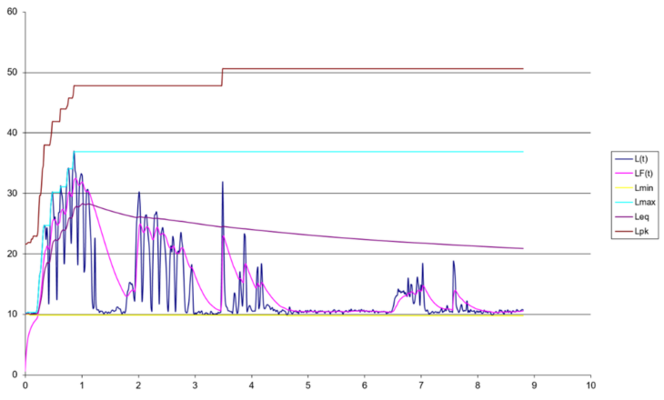
Through signal processing, ultrasound can be converted into a secondary “downmixed” signal in the audible range.
In the heterodyne method, a narrow frequency in the ultrasonic range is selected (e.g. carrier frequency of 40 kHz +/- 2 kHz) and transformed into the audible range via difference frequencies. The method is used in the traditional analogue test equipment, which work in the narrow band around 40 kHz. The broadband digital SONPAHONE® integrates this approach. By means of a shift of the carrier frequency (movable line in the spectrogram in the broadband 20 … 100 kHz), the corresponding narrow-band audio signal is made available.
In many cases a qualitative evaluation is already possible with the heterodyne method via the audible impression, for example in leak detection and in the basic evaluation of bearing condition.
In most cases, the ultrasound signals are distributed over a broad frequency range. This means that the information in the acoustic signal cannot be completely detected in a narrow frequency range. In the case of the SONAPHONE, which operates in broadband, it is possible to convert the signals using the phase vocoder method. Doing this, the entire frequency range of 20 … 100 kHz is compressed by a factor of 32. Despite little loss of information, the original acoustic situation in the broadband can be reproduced, the audible impression is available for the entire ultrasound range.
Both methods “sound” differently. The user can listen to the signal via built-in speakers or headphones. The sampling rates of the audio signals are 8 kHz. The volume of the signal changes in the same way as the intensity of the original high-frequency signals. In addition, the variation of the original signal over time is preserved so that the dynamics of events in the audible signal are reflected.
In addition, the SONAPHONE records the audible signals. They are available in WAV format and are thus also available for further data processing.
